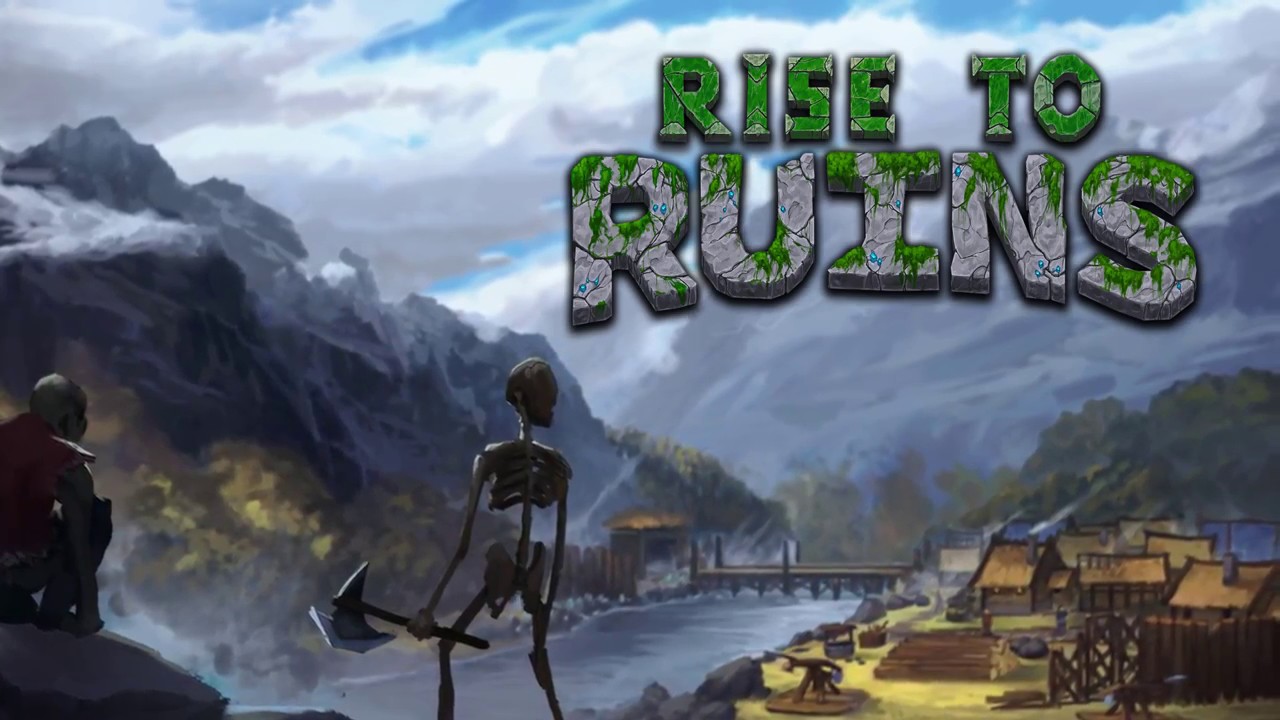
The idea behind Rise to Ruins is obvious in hindsight; city builders which feature enemy attacks are basically tower defense games. They might lack the maze-like corridors but make no mistake, you generally build up your town, castle, dwarfhold, or whatever to repel enemy attacks. So why not make your city-builder a tower defense game from the getgo?
Rise to Ruins takes this logic and runs with it, you’re tasked with building up a small continent with multiple settlements and facing off against the corruptive forces of darkness. Only instead of building typical immersive defenses, you’re encouraged to build winding tower defense corridors like you’re playing a Warcraft III custom match.
Rise to Ruins
Developer: Raymond Doerr
Publisher: SixtyGig Games
Platforms: Windows PC (Reviewed)
Release Date: October 14, 2019
Players: 1
Price: $14.99 USD
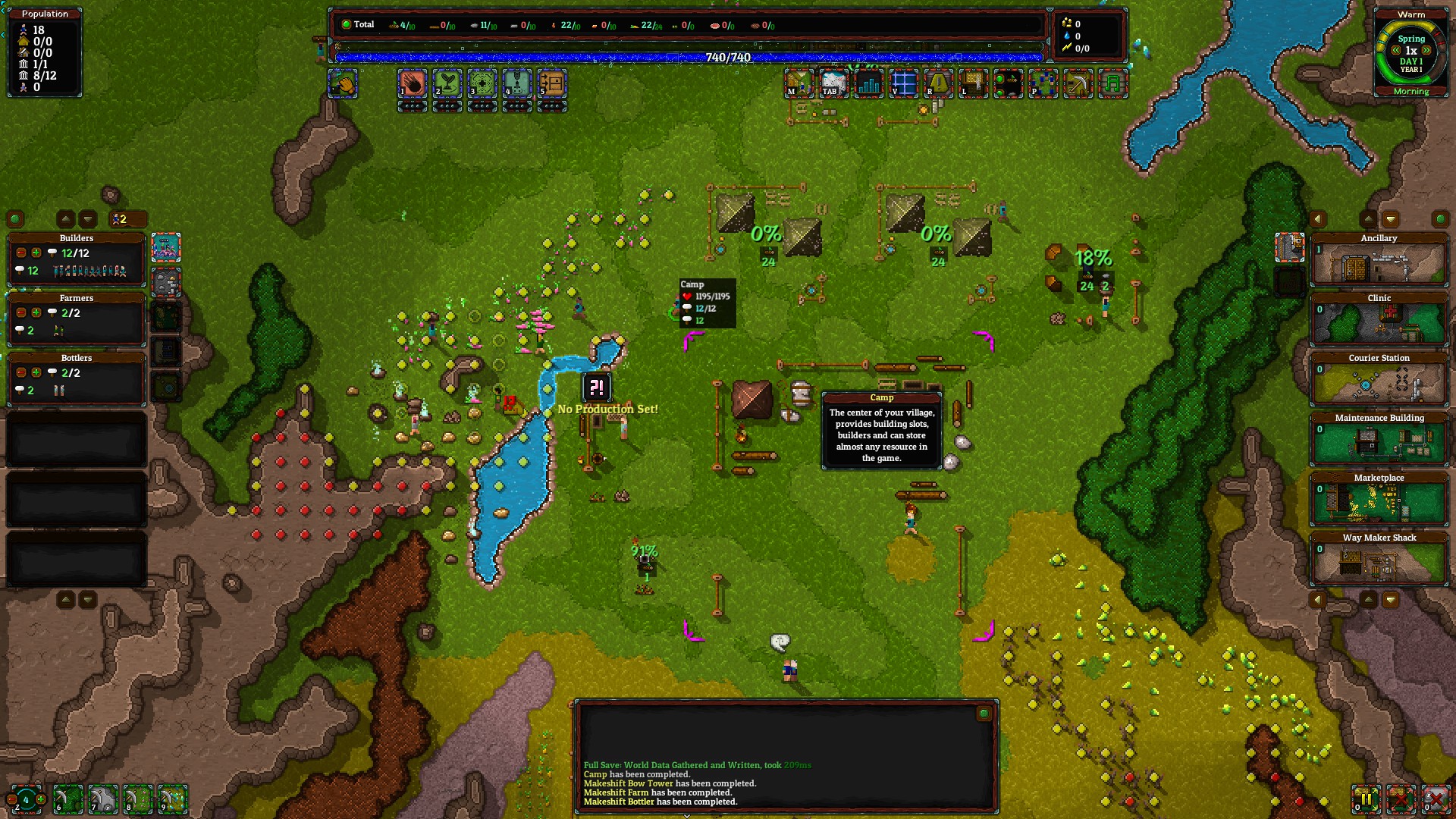
Rise to Ruins introduces itself as a “godlike village simulator” with inspiration from games like Dwarf Fortress, Rimworld, and Black and White. Players take on the role of an amorphous deity who’s guiding their chosen people in a land threatened by a foul corruption.
Players will be in charge of maintaining and organizing a growing village of their own creation. But when night falls, monsters will come. Rise to Ruins offers a multitude of difficulties and for most of this review I played “Traditional”, one of the two normal difficulties but the easier of the two and frankly I’m glad I did.
In my defense, Rise to Ruins is an ambitious game with a steep learning curve. However even once you’ve learned how the game works, you realize that instead of a well-oiled machine, your village is more like a big truck, cumbersome and difficult-to-handle.
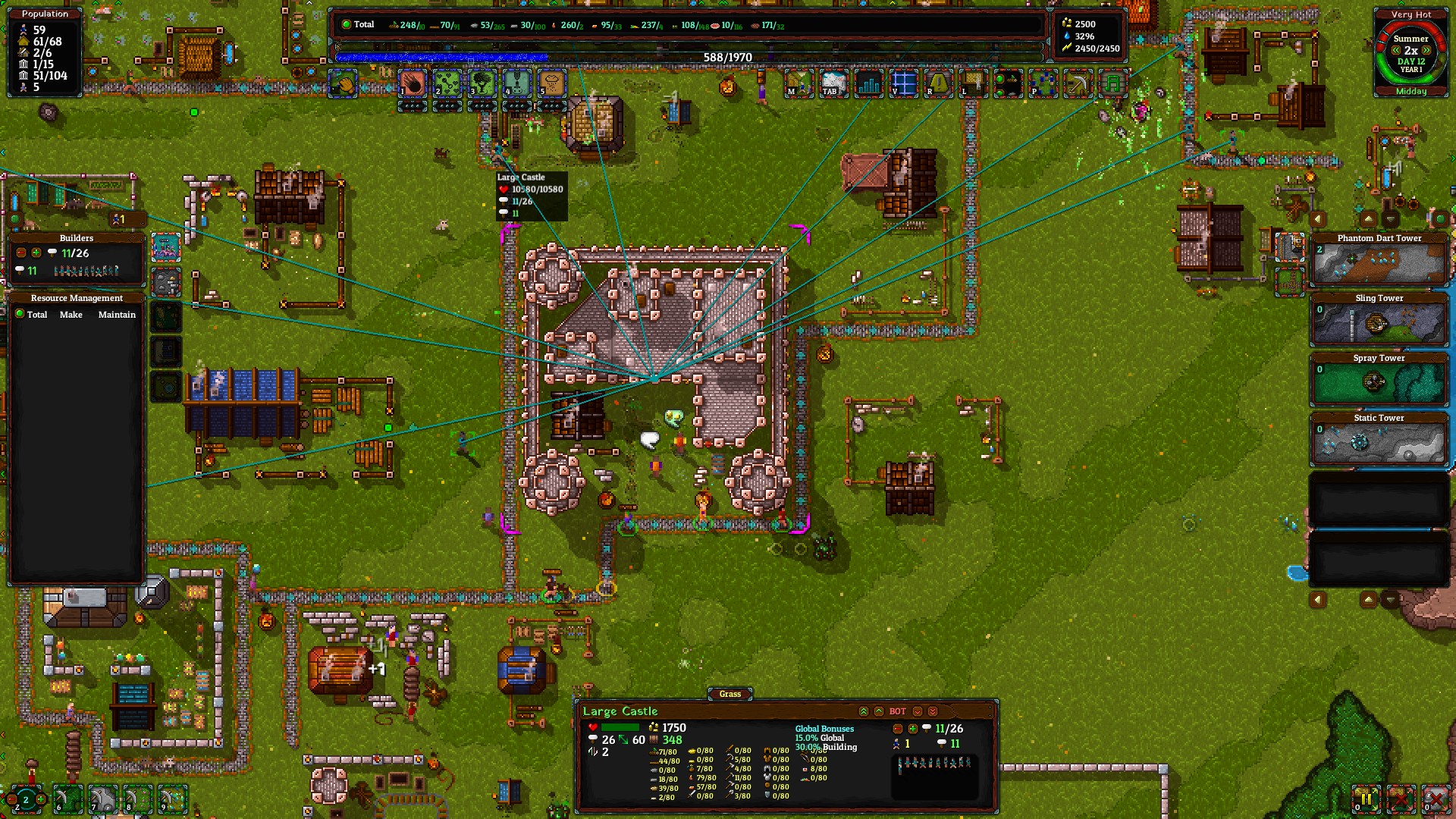
Your villagers are prone to do things inefficiently and perhaps it’s a personal failing but I couldn’t figure out how their AI worked. Why are builders taking stone from the main camp, when the mining station is right next to the walls I’m building? Why are they leaving a building half-built at 98%? Why is it that the only time the builders seem to get off their ass is when I want them to do terraforming like uprooting trees or filling in lakes with dirt?
Or worse, why is it I’ve built plentiful housing, amassed an obscene stockpile of water, but someone still managed to work themselves to death via overheating? Rise to Ruins offers no micromanagement to manually fix these problems. I can’t click a villager and tell him to go to bed before he dies. I can just assign a number of villagers to different jobs, that’s the extent of my interaction with them.
But this has its upsides, the lack of micromanagement frees me up to focus on base-building and strategizing. While Rise to Ruins is a city builder, it’s also a tower defense game, and the forces of darkness are fast approaching.
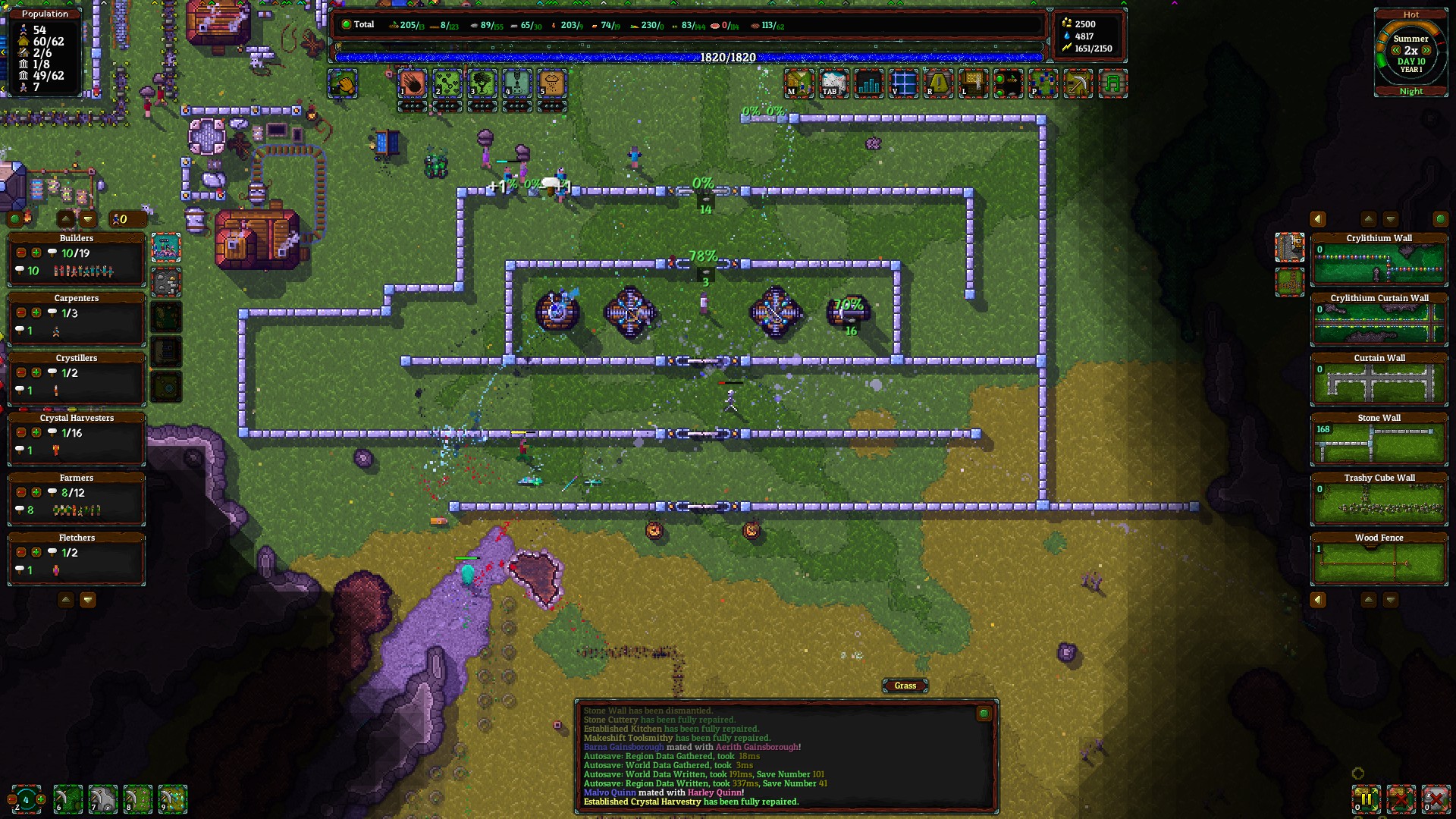
After trying and ultimately resetting about five times while I learned a build order that didn’t cause a third of my starting villagers to die of heat or dehydration (Protip: Build houses, water purification, and farms in that order, I don’t know if that’s optimal but it works) I could finally start working on actually defending my village.
In Traditional difficulty, things start off slow. The first two nights you might see a single slime and your villagers (or a Holy Golem, but we’ll get into those later) can easily kill it. But the real bread and butter of defense are mazes and towers and Rise to Ruins gives you all the tools you need.
My first playthrough that lasted more than five days, I made a quaint little maze protecting a southern valley, the rest of my town was protected by natural mountains and the edge of the map. It was small, but it did the job and shows off what the game expects of you.
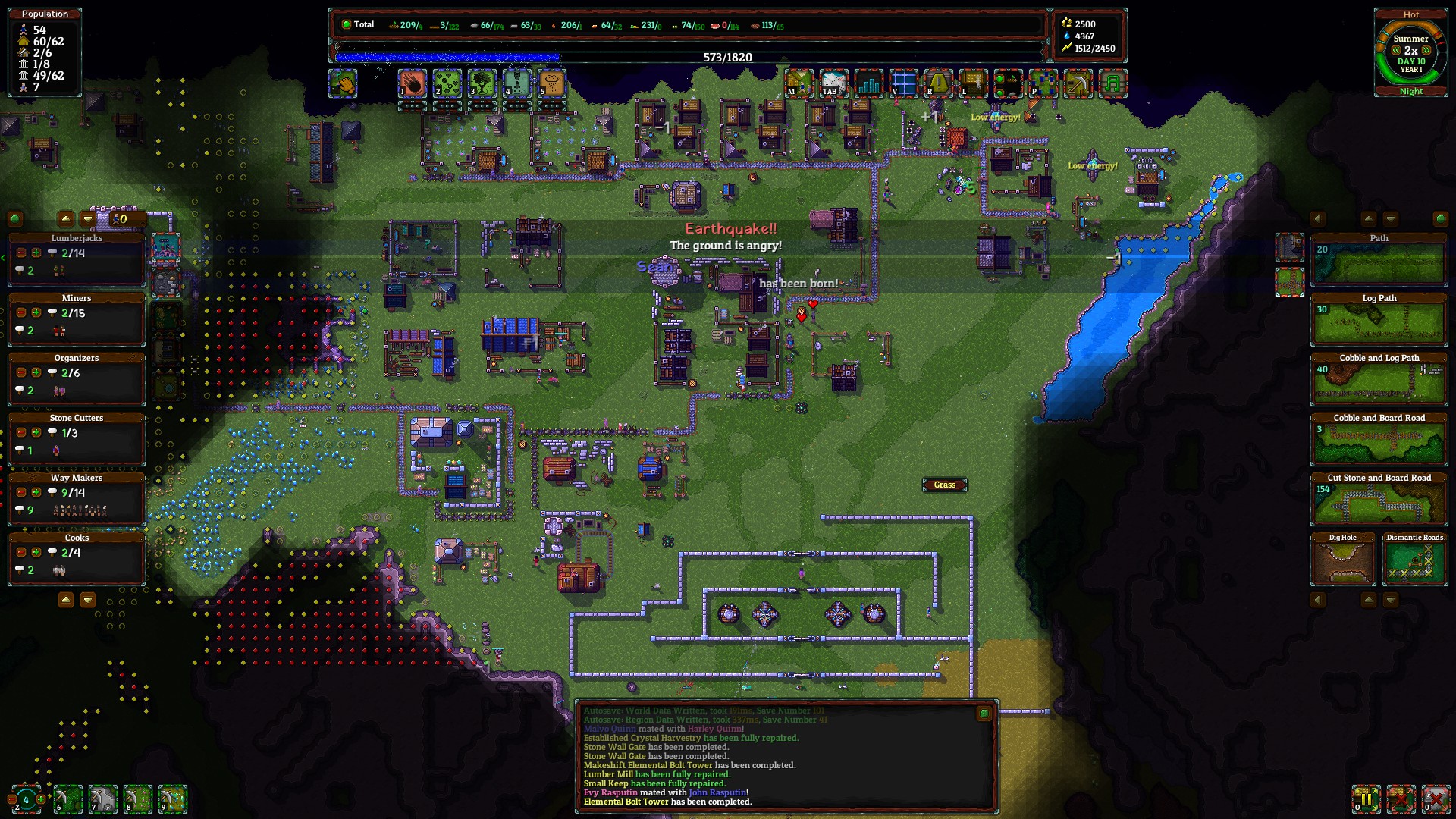
After those first couple days, I was finally able to build things relatively quickly and my village became more and more manageable as my resource stockpiles grew. Now that I knew how to defend my village, the game’s tutorial politely informed me of my next objective: spreading my influence into evil’s territory.
The real game is a constant tug of war with the corruption slowly spreading across the map and you strike a balance between protecting yourself, while also putting buildings at risk the deeper you encroach. This is where Rise to Ruins shines, it’s a city builder with something to do. Other city builders will be like “stockpile X amount of Y by this date” or other tasks to test your efficiency, Rise to Ruins tests your strategy even while it tests your city building skills.
In addition to your villagers, you as a god are able to work some miracles to help your people out. You can conjure golems, encourage natural resources to regrow faster, or throw meteors to strike your enemies. These miracles can’t be spammed endlessly, but there’s always some way to get value from your godly influence. You’re rarely left simply waiting in Rise to Ruins.

Graphically, the game has cute spritework with a surprising amount of detail. All buildings can be upgraded and each upgrade visually changes how your building appears. Not only that, but buildings with storage will actually reflect the fact they have things in them. It’s satisfying to see the yard of your mining station fill up with stone, almost everything that happens in your village is reflected visually.
Ultimately, Rise to Ruins has a few troubles with its villager AI but that’s more than made up for by the originality of the game and the way almost everything else handles. During the day you flex your city-building muscles, and at night your defenses are tested by growing waves of enemies.
Eventually, your power and confidence grows and you can begin to attempt expanding beyond your walls, paying for each inch of corrupted territory in blood and dominating the forces of evil as you go. The game’s Steam page says it best, that while Rise to Ruins draws inspiration from the greatest games of the genre, it’s “not quite like any of them”.
Rise to Ruins was reviewed on Windows PC using a personal copy. You can find additional information about Niche Gamer’s review/ethics policy here.